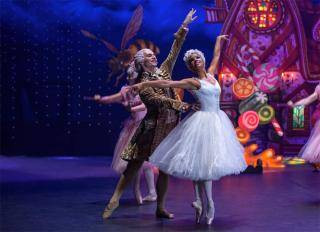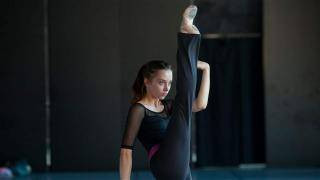I love movies. Like, really love them. Over the past year, I’ve lost count of the times I’ve settled into a theater seat, ready to be transported. Some films have been incredible, others less so, but a fascinating trend has emerged: dance is everywhere in film! On the surface, this feels like a win for the dance world, but I’ve noticed something that bothers me: where are all the actual dancers in these leading roles?
It first struck me when “Black Swan” premiered in 2010. The ambition was there, the artistic vision, but let’s be real – Natalie Portman wasn’t executing those breathtaking fouettés at the film’s climax. As someone who dedicated years to mastering pirouettes en pointe, it’s jarring to hear, “Wow, Natalie Portman learned ballet so quickly!” The truth? She didn’t. Many dance-centric films rely heavily on body doubles. Dance films often feature actors in leading roles, not professional dancers. Sure, you’ll see dancers in the ensemble, and the stunt doubles are undeniably talented, but the main characters are rarely seasoned dance professionals. Need more convincing? Let’s look at a few examples.
 Benjamin Millepied holding Natalie Portman as she leans back in a dancing scene from the Black Swan movie
Benjamin Millepied holding Natalie Portman as she leans back in a dancing scene from the Black Swan movie
Natalie Portman and Benjamin Millepied in “Black Swan” showcase the grace of ballet, yet behind the scenes, dance doubles were essential to bring the demanding choreography to life. © Fox Searchlight
In “Black Swan”, Natalie Portman took the lead, and as established, she’s not a professional ballerina (with all due respect to her acting prowess). “Red Sparrow” featured Jennifer Lawrence in a role that touched upon ballet, but she isn’t a trained dancer either. “Suspiria” was deeply rooted in dance, starring Dakota Johnson. “Save the Last Dance” centered on a dancer’s aspirations, with Julia Stiles in the main role. “Ballet Shoes” presented actress Lucy Boynton. The list goes on. These actresses, while talented, all relied on dance doubles for complex choreography. And this isn’t limited to ballet. Consider “La La Land.” Ryan Gosling and Emma Stone are captivating, but their dancing, while charming, wasn’t performed without the help of doubles for more intricate sequences.
 Emma Stone in a yellow dress and Ryan Gosling in a shirt and tie, dancing together against a hollywood night backdrop
Emma Stone in a yellow dress and Ryan Gosling in a shirt and tie, dancing together against a hollywood night backdrop
Ryan Gosling and Emma Stone in “La La Land” charmed audiences with their on-screen chemistry and dance numbers, however, professional dancers stepped in to execute more technically demanding routines. © Lionsgate
So, why do directors and casting directors often overlook professional dancers for dance roles? Box office appeal is a major factor. A well-known actor attracts larger audiences, translating to ticket sales. Familiarity often trumps pure dance talent when it comes to securing financing and viewership. Even if a dancer possesses acting ability, they typically need mainstream recognition to headline a film and guarantee revenue. Disney’s “The Nutcracker and the Four Realms” cast the renowned Misty Copeland as the ballerina. This was a positive stride, recognizing Copeland’s fame within and beyond the dance world. However, it’s important to note that ballet wasn’t central to the film’s narrative, and Copeland wasn’t the lead character.
 Misty Copeland in a long white tutu and Sergei Polunin partnering against a candy christmas backdrop
Misty Copeland in a long white tutu and Sergei Polunin partnering against a candy christmas backdrop
Sergei Polunin and Misty Copeland in “The Nutcracker and The Four Realms” – a blend of ballet artistry and star power, though ballet remained a component rather than the core focus of the film. − Photo: Laurie Sparham
It’s easy to criticize Hollywood for this casting trend. But let’s consider the other perspective. Are there dancers who are also compelling actors, capable of carrying a film? Casting a dancer might seem risky – some worry about acting quality. We have seen examples of dancers delivering less-than-stellar acting performances on screen. However, numerous dancers have demonstrated strong acting skills. Take the dance film classic “Center Stage.” Zoe Saldana’s dance background was instrumental in landing her role, and her acting talent propelled her to stardom in franchises like “Avatar” and “Guardians of the Galaxy.” Sofia Boutella seamlessly transitioned from a successful dance career to acting in major blockbusters. And then there’s the “Step Up” franchise.
Channing Tatum and Jenna Dewan, the stars of the original “Step Up” film, weren’t just actors pretending to dance. They were dancers who could act. “Step Up” wasn’t just a movie; it was a cultural phenomenon, launching a successful franchise that celebrated dance and showcased the talents of dancers who could also command the screen. The “Step Up” movies, particularly the first few installments, demonstrated that casting dancers in leading roles could resonate with audiences, creating engaging stories with authentic movement. The casts often included dancers in supporting roles as well, creating a vibrant and believable dance world within the films. This “year of dance,” as the “Step Up” franchise inadvertently ushered in, proved that audiences were hungry for dance movies featuring actual dancers.
More recently, professional ballerina Anastasia Shevtsova starred in the French indie film “Polina, Danser Sa Vie.” Shevtsova’s performance was critically acclaimed; she received a César Award nomination for Most Promising Actress, proving dancers can deliver powerful acting performances.
 Anastasia Sheytsova in black sweats doing a high kick in front of her
Anastasia Sheytsova in black sweats doing a high kick in front of her
Anastasia Shevtsova in “Polina” exemplifies the potential of dancers as actors, bringing both grace and emotional depth to her performance.
In conclusion, it seems casting directors often feel forced to choose between a strong dancer and a strong actor. But the “Step Up” franchise and other examples show that we don’t have to compromise. Dancers can act and deliver captivating performances on stage and screen. It’s about recognizing and nurturing that dual talent. Hollywood needs to look beyond celebrity names and appreciate the wealth of talent within the dance community. The “year of dance” can be every year if we give real dancers the spotlight they deserve.
